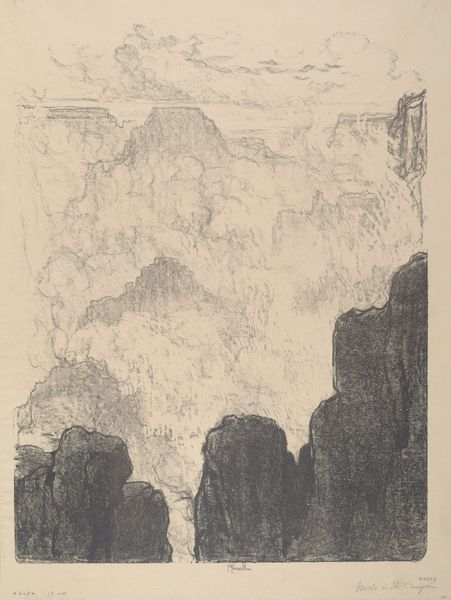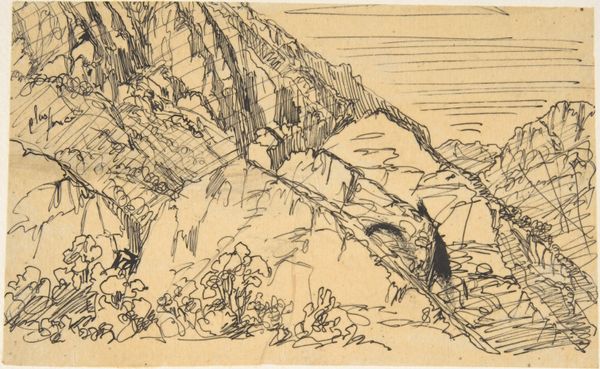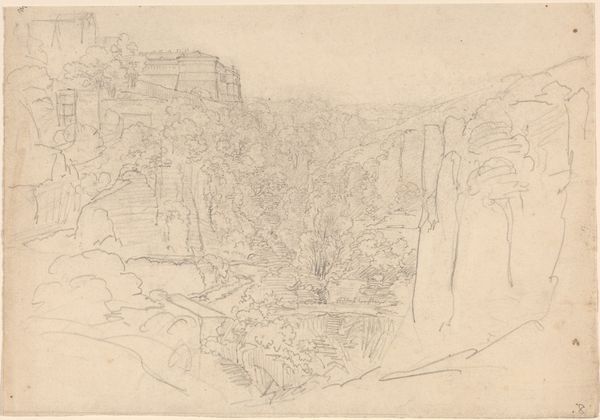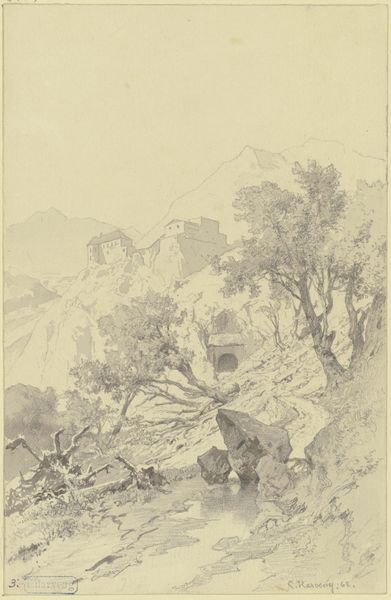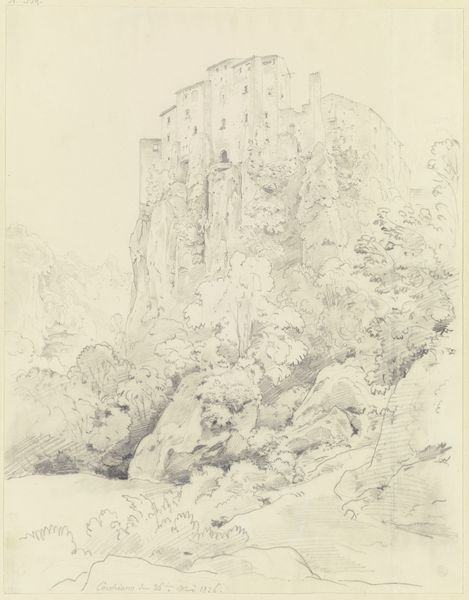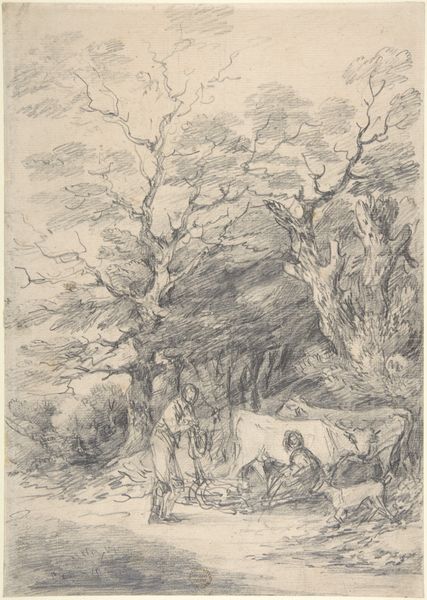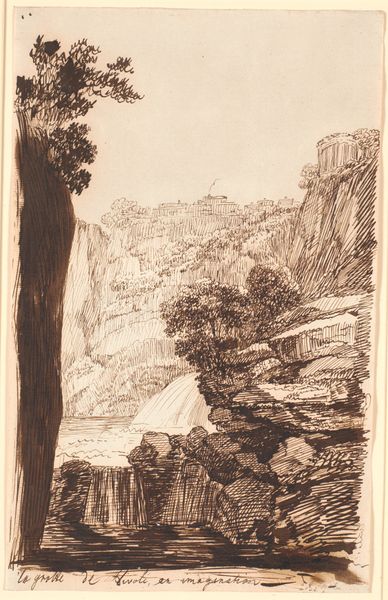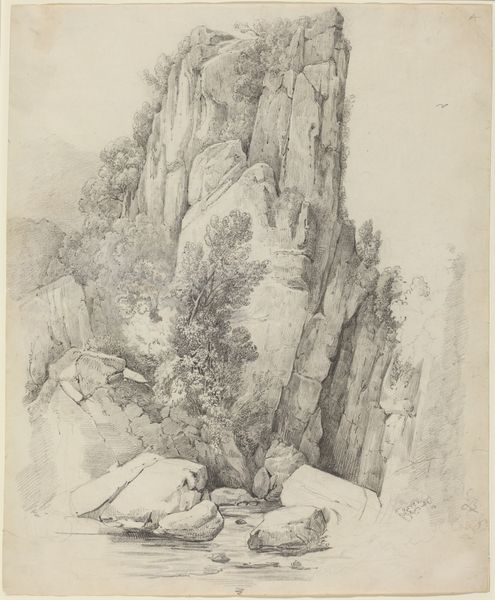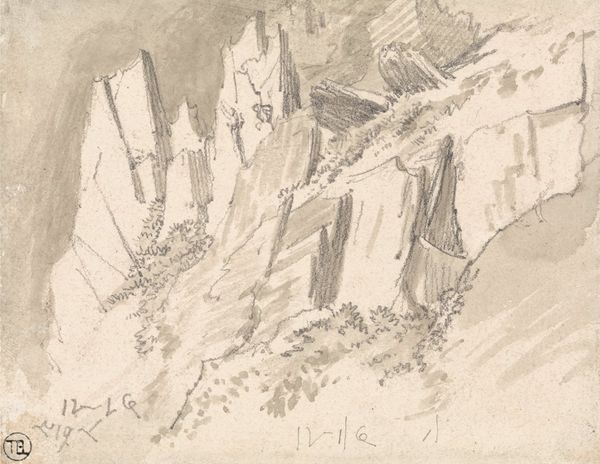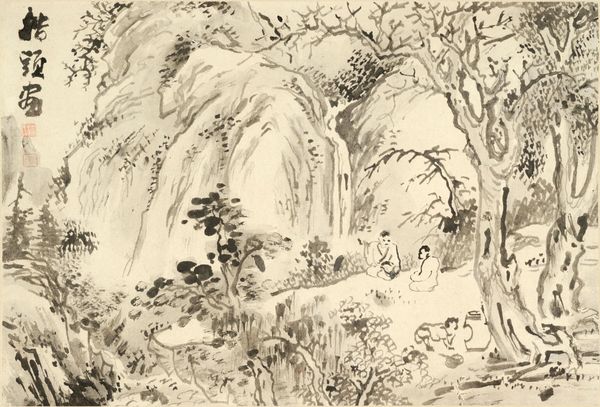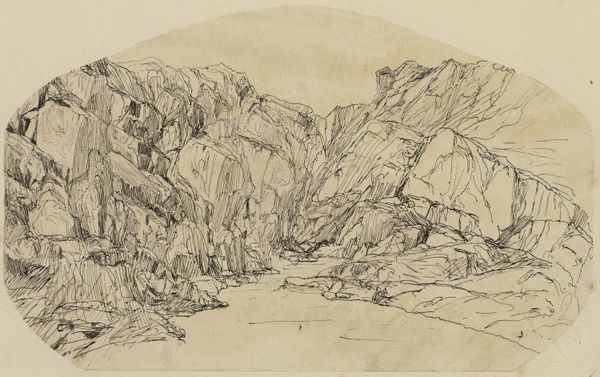
drawing, watercolor, ink, pencil
#
drawing
#
landscape
#
watercolor
#
ink
#
romanticism
#
pencil
#
watercolour illustration
#
realism
Dimensions: 4 1/2 x 3 1/8 in. (11.43 x 7.94 cm) (sheet)11 1/2 x 9 3/4 in. (29.21 x 24.77 cm) (outer frame)
Copyright: Public Domain
Edward Lear created this drawing, "Ear of Dionysius," in 1842, likely en plein air, using graphite and brown wash on paper. Lear, though primarily known for his literary nonsense, was also a prolific landscape artist. This particular sketch depicts a cavern in Syracuse, Sicily, known for its unique acoustic properties. Legend states that the tyrant Dionysius used this cave to eavesdrop on his prisoners. Consider the emotional and psychological implications of surveillance and imprisonment. The figures in the foreground appear small and insignificant against the monumental scale of the landscape. Their presence underscores the complex interplay between power, knowledge, and vulnerability. Lear’s choice to represent this site speaks to broader themes of power, control, and the hidden aspects of human nature. It asks us to consider the darker sides of history. The drawing captures a sense of the sublime, where beauty and terror intertwine.
Comments
No comments
Be the first to comment and join the conversation on the ultimate creative platform.

